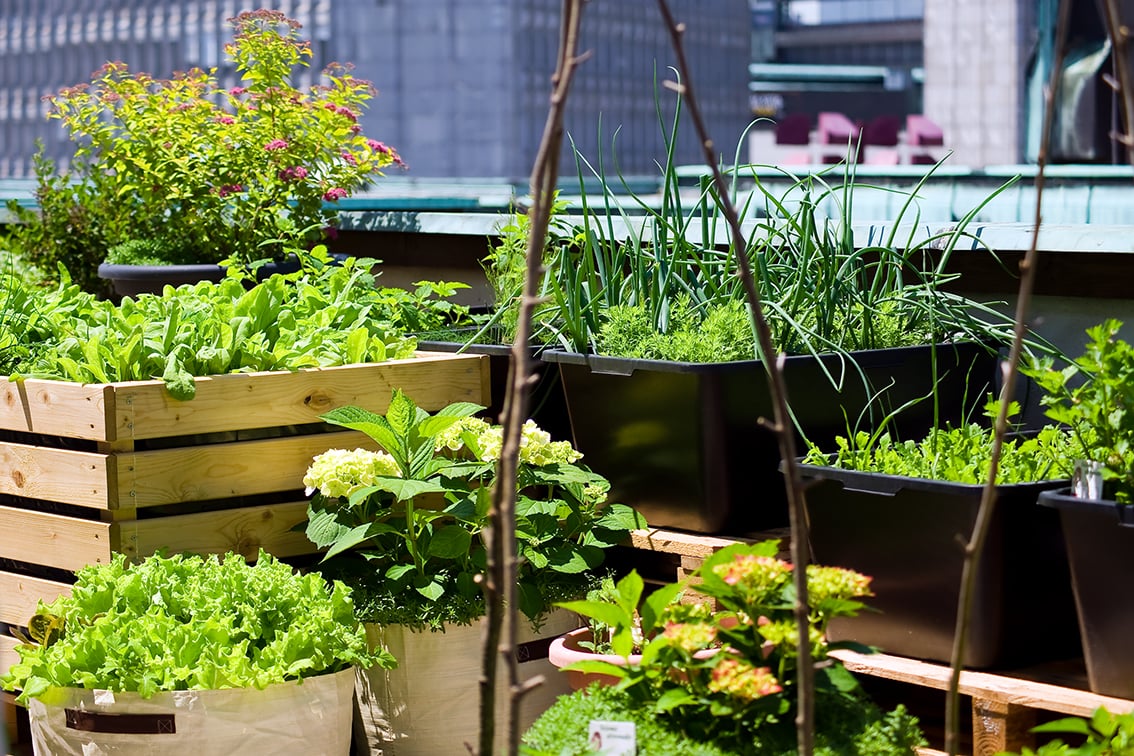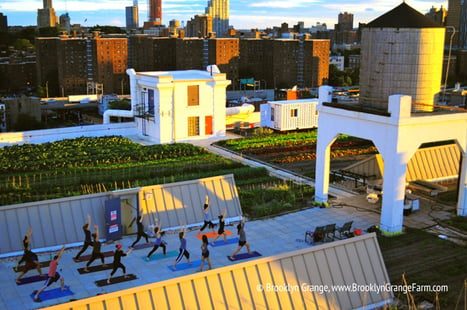The developed world is facing a potential food production crisis as the urban population has already exceeded the rural population. According to estimations, by 2050 only one third of the global population (34%) will be rural, and the remaining two thirds will be urban. This is a problem due to large demands for food supplies expressed by the major world cities. London, for instance, is home to 12% of the UK population, yet it currently needs an area equivalent to 40% of the agricultural land of the UK to meet its food demand. This means that the world’s agricultural production will have to grow significantly, but there is a problem – by 2050, the arable land worldwide will probably not be able to expand by more than 12% compared to today, which will not cover our global needs. (1)
Agriculture today is also quite unsustainable as it relies on mostly fossil fuels and generates a significant amount of greenhouse gasses. The inefficiency of the current food production system is illustrated by the fact that the production of one calorie consumes about 10-15 calories from non-renewable energy sources. To get from the food from the field to our tables, food distribution systems of today heavily dependent on road and air transport, increasing fossil fuel consumption and air pollution in the process. As our growing demand for food on the global scale rises, these shortcomings will become ever more problematic. To counter the global food crisis, urban agriculture was recognized as one of the possible solutions. (1)
What is urban agriculture?
Urban Agriculture is a term used to describe the production of food in urban areas. It can take the various forms, such as community gardens, rooftop farming, indoor controlled environment agriculture, and animal husbandry. The process involves intensive cultivation methods and integrates its products and activities into the surrounding economic, social and ecological systems. In this way, it also provides additional opportunities for employment and education. (2)

Photo 1: Rooftop garden in Ljubljana, Slovenia
The main environmental effects of Urban Agriculture are linked to the reduction of greenhouse gas emissions and energy saving, resulting in a reduced impact on global warming. The application of the "farm to table" food concept in the local market reduces the need for storing and distribution, which involves energy-intensive transportation and infrastructure. In addition, today between 30 and 40% of food production is lost due to failures in the transport, storage and distribution chain. Localized food production in urban areas can solve the problem of wasted food by eliminating these steps. Lastly, many urban areas are fully renewed and regenerated thanks to reusing of empty, abandoned or underused areas. (1)
Urban Agriculture as a Green Infrastructure strategy
Cities today are mostly covered by hard, impervious surfaces that restrict the natural flow of water, which can result in various problems, such as the urban heat wave phenomenon, water pollution, flooding and other environmental hazards.
In urban areas, the role of green infrastructure is to mimic the otherwise compromised natural water cycle by activating infiltration capacities of vegetation, soils and other natural surfaces to mitigate stormwater runoff. In this context, urban agriculture represents a multifunctional strategy for stormwater management that provides multiple social and environmental benefits. (3)
Urban Agriculture as Green Infrastructure also plays a part in providing community resilience. Urban farms increase the nutritional health of the community by providing affordable and accessible fruits and vegetables, improve the local economy by increasing property values, and provide residents with a greenspace to care for. (4)
Urban Agriculture and New Sanitation
In the future, our cities must adopt a circular metabolism that relies on recovering, reusing and recycling resources. Urban Agriculture and source separation-based New Sanitation methods are emerging as potential solutions. New Sanitation is a term used to describe the collection, transport, treatment, and recovery of solid waste and wastewater from toilets and other wastewater sources with the aim to recover resources, such as clean water, nutrients and organic matter. The possibilities of reuse range from crop irrigation to the reuse of fertilizers from the treatment of wastewater. In this scenario, Urban Agriculture provides local food sources while New Sanitation provides the management and reuse of wastewater and organic waste in order to recover valuable resources. This would both increase efficiency, reduce energy costs, and/or offer solutions to waste management. (2)
Introducing Urban Agriculture into the city landscape
In the planning and implementation of integrated Urban Agriculture systems into the urban environment, the community plays a key role in the recognition of the quality, benefits and other elements that enable the wide recognition of the social importance of the system. (1)
The help of local governments and municipalities is also crucial, benefiting both the communities and the local budget. For an excellent example, we can look to New York – a city that is constantly under pressure to reduce its carbon footprint. The Big Apple decided to invest into green solutions, and their Department of Environmental Protection has calculated that the move from Gray to Green Infrastructure could save up to 1.5 billion dollars over a 20-year period! They have also organized a NYC Green Infrastructure Grant Program that provides funding to private owners and organizations. This has enabled the reformation of the Brooklyn Navy Yard into the Brooklyn Grange – the largest roof top farm, covering an entire acre and growing various types of tomatoes, salad greens, carrots, herbs, peppers, beans, radishes, etc. (5)


Urbanscape® products
Our solutions boast a superior water absorption and high water retention capacity, suitable for various types of applications, including Green Infrastructure and Urban Agriculture projects.
Urbanscape® Green Cubes and Urbanscape® Green Flocks can both be used as a growing medium for the professional cultivation of plants or as a high quality additive used to improve soil and save water in a variety of different landscaping applications.
For more about our solutions, visit our website:
https://www.urbanscape-architecture.com/solutions/
Blog written by: Ana Belčič, Studio Miao
Sources:
- Florence “Sustainability of Well-Being International Forum” 2015, Food for Sustainability and not just food, Feeding the Cities Through Urban Agriculture - The Community Esteem Value: Saverio Miccolia*, Fabrizio Finuccib , Rocco Murroa; a La Sapienza University of Rome, Department of Civil, Building and Environmental Engineering, Via Eudossiana 18, Rome, 00184, Italy; b University of Roma Tre, Department of Architecture, Via della Madonna dei Monti 40, Rome, 00184, Italy
- Harvest to harvest: Recovering nutrients with New Sanitation systems for reuse in Urban Agriculture: Rosanne C. Wielemaker, a,∗, Jan Weijmaa, b, Grietje Zeemana, b; a Sub-department of Environmental Technology, Wageningen University & Research, PO Box 17, 6700AA Wageningen, The Netherlands; b Lettinga Associates Foundation (LeAF), Wageningen, The Netherlands
- Siting Urban Agriculture as a Green Infrastructure Strategy for Land Use Planning in Austin, TX: Charles M. Rogers, Colleen C. Hiner, Department of Geography, Texas State University, San Marcos, TX, USA
- Urban Farms A Green Infrastructure Tool for the Chesapeake Bay: Meghan Boian, Jenny Hughes, and Liz Deardorff, June 2015, American Rivers © Urban Agriculture as Green Infrastructure: The Case of New York City: Nevin Cohen and Katinka Wijsman, Urban Agriculture Magazine no.
Photos sources:
Photo 1: Rooftop garden in Ljubljana, Slovenia
Photos 2 / 3: Brooklyn Grange Rooftop Farm #2 at Brooklyn Navy Yard, Building No. 3, https://www.greenroofs.com/2016/06/06/project-of-the-week-for-june-6-2016-brooklyn-grange-rooftop-farm-2-at-brooklyn-navy-yard-building-no-3/


